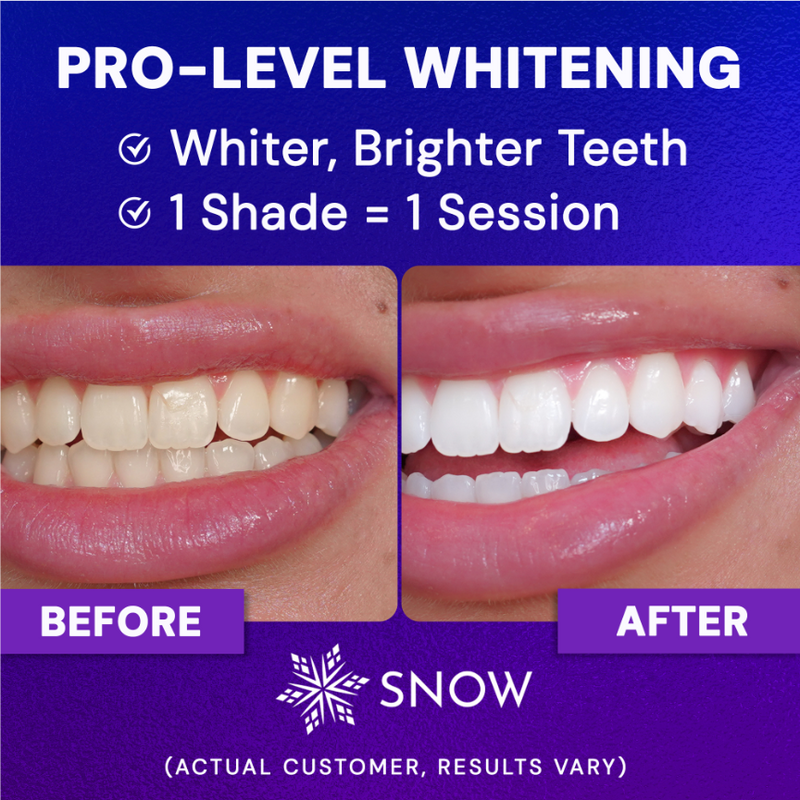Clear aligners, also known as invisible aligners, are used to correct misaligned teeth and bites. They are a virtually invisible and removable alternative to braces that are designed for comfort and flexibility.
The clear aligner treatment involves trays made of BPA-free plastic and are made specifically for each patient. Each tray gently moves the teeth in small steps.
Aligner trays are changed every two to three weeks until the teeth are straight and aligned. The severity of the teeth misalignment determines the number of trays required.
Some clear aligners do not even make contact with your gums. They are trimmed in a 'scalloped fashion' to sit comfortably along your gum line. This design makes the trays less bothersome and more 'invisible.'
THE PROCESS BEHIND CLEAR TEETH ALIGNERS
How exactly do clear aligners accomplish their job? If you decide to have your teeth straightening process using dental aligners, your dentist, orthodontist, or the company that sells clear aligners directly to consumers will first obtain impressions of your teeth. After completing this scan, your unique dental aligners will be designed.
If you need them, your dentist or orthodontist can also place small, tooth-colored attachments to your teeth so the clear aligners can fit over them. This gives the invisible aligners more strength, allowing them to move your teeth more effectively into the ideal position.
Consider the next time you encounter someone wearing metal brackets and traditional metal braces. Attachments enhance the capabilities of the clear aligners by using tooth-colored, bonded pieces, unlike braces that use metal brackets. To facilitate the trays' engagement with the teeth and facilitate the teeth's movement in the direction and position that we eventually want, customized invisible aligners are engaged with particular teeth.
Patients progressively receive several trays to shift their teeth into place throughout their aligner treatment. In most cases, one tray works for around a week to two weeks. According to the recommendations of the American Association of Orthodontists, you should keep your trays in for 22–24 hours a day and take them out only to consume food and liquid.
Each tray can take anywhere from six to twelve months to successfully move the teeth a few millimeters in the desired direction. The usual course of invisible aligner treatment consists of 25 trays, which equates to a total of 25 weeks, and [with] each tray. You will notice the tooth shifting ever-so-slightly closer to its final, optimum position.
HOW CAN TEETH BE STRAIGHTENED WITH CLEAR ALIGNERS?
You will be provided with many sets of Invisalign trays, one of which you will use between 7-14 days before switching to a new group. Each tray is designed to fit your mouth and progressively adjusts your teeth with a mild amount of pressure (about 0.25 to 0.3 millimeters each treatment time). The majority of clear aligner treatment plans call for a duration of between 12 and 18 months.
ATTACHMENTS
Invisalign attachments are little lumps of tooth-colored plastic bonded to individual teeth. The majority of patients receive these attachments. These attachments serve as pressure points that enable the invisible aligners to grasp your teeth better and facilitate moving your teeth into the correct position.
ELASTICS
Elastics are utilized in most orthodontic treatment modalities, including traditional braces. They may be used with more modern options like Invisalign, but the majority of aligner cases don’t use them. The teeth on top and bottom are gradually drawn into correct alignment with the help of elastic bands. Elastics are thin rubber bands that are used to realign a person's bite to improve their dental health. When using Invisalign, the elastics will connect to the attachments on the invisible aligners. The number of elastics required and the locations at which they are placed will vary from patient to patient. These details will be tailored to your treatment strategy.
REDUCTION OF THE INTERPROXIMAL SPACE
Some patients who have Invisalign may require a simple toot-shaping known as Interproximal Reduction or IPR for short. IPR establishes minimal amounts of space between pairs of teeth to allow the teeth to move as needed during treatment. This gives the patient more control over how their teeth look after the treatment plan. IPR includes bending or resizing certain crooked teeth to alleviate crowding, get rid of black triangles, or avoid removing a tooth. IPR is a non-painful treatment that requires only a tiny amount of enamel to be removed.
WHY ARE ALIGNERS IN OFFICE DIFFERENT FROM HOME ALIGNERS?
There are two primary categories of clear aligners on the market today:
Using at-home aligners does not require you to contact a dental expert at any point throughout the treatment plan. You also have the option of purchasing a home impression kit. These invisible aligners are often priced at less than $3,000, making them more affordable than in-office alternatives.
In-office aligners such as Invisalign need you to schedule regular appointments with your dentist or orthodontist for the duration of your treatment plan. Because of the greater level of care that they provide, these invisible teeth aligners generally cost between $5,000- $8,000.
AT-HOME ALIGNERS
Teeth straightening kits, often including a home impression kit, allow patients to begin the orthodontic treatment plan in their homes conveniently. The procedure is known as aligner therapy which may be done at home. Traditional aligners, such as Invisalign, are more difficult to obtain, more expensive, and less convenient than these alternative therapies.
Direct-to-consumer aligners, or at-home aligners, are another name for these devices. The treatment plan is supervised from a distance, and you won't need to go to the dentist or the orthodontist for regular consultations or checkups. Instead, you will place an order for a home impression kit, take the impressions yourself, and then send them back so that the eligibility may be determined.
Other companies provide an alternative to in-person scans.
After looking at the 3D model, you will have the choice of whether or not to go forward with the treatment if it is found that you are a candidate. You have the option of requesting a refund for the cost of the impression kit if you choose not to proceed. If you decide to go through with treatment, the invisible aligners are non-refundable.
Note that over-the-counter (OTC) aligners can only address mild to moderate instances of teeth that are crooked or crowded. A few misaligned teeth or even just a few millimeters of space between the teeth are two examples. Conventional braces or Invisalign treatments are the best solutions when dealing with more complicated concerns.
ALIGNERS PLACED IN OFFICE
In-office aligners provide complete treatment but come at a significantly greater cost. The total invisible aligners cost of the therapy might be as high as $8,000, with the price averaging $5,500. Before beginning treatment, you are required to make an appointment with a qualified dental professional, and you should continue these appointments every four to six weeks (this varies).
The most well-known and reliable brand of in-office aligners is called Invisalign, with good reason. This sophisticated aligner system can correct most cases of malocclusion, also known as tooth misalignment, from simple to complicated bite problems.

WHAT PRICE RANGE DO CLEAR ALIGNERS FALL INTO?
The invisible aligner cost is determined by the brand of aligners selected, the length of treatment that is necessary, and the number of required aligners.
Many businesses offer the "payment plan" option, enabling customers to make a larger initial payment followed by lower subsequent monthly installments.
The costs of some of the most common clear aligners vary significantly, from roughly $800 to as high as $8000.
HOW TO KEEP CLEAR ALIGNERS CLEAN
It is important to remember that there is a distinction between washing and rinsing when it comes to Invisalign. Rinsing your aligners makes them seem cleaner, but you haven't done anything to eliminate the germs that might build up behind the surface of the aligners.
On the Invisalign website, the following is outlined as the fundamental cleaning routine that should be performed each night:
- Always give your aligners a little soak in water before bed.
- Brush your aligners using a toothbrush with soft bristles (not the one you use to brush your teeth every day) and a mild, clear liquid soap to remove any debris or food particles that may have been collected for the day.
- After brushing, make sure to give aligners a good rinse.
- Always keep them in a safe place, like a case, when not in use.
IS IT POSSIBLE TO WHITEN TEETH WHILE USING CLEAR ALIGNERS?
That answer is yes, thanks to the SNOW whitening foam.

Managing clear aligners is sometimes a hassle, and whitening on top of that can be burdensome. That is why Snow has thought of how to help streamline the process.
Customers benefit from our brand-new Whitening Foam, the solution that will help you achieve your whitening goals. Spraying the foam into the tray of your aligner or night guard can help gently whiten your teeth while also giving your dental gear a clean and fresh feel.
- Whitens teeth gently while also assisting in cleaning orthodontic appliances such as aligners, retainers, night guards, and so on.
- It contains hydroxyapatite and arginine, both beneficial to the health of enamel.
- It is possible to leave the trays in the refrigerator overnight for moderate whitening and breath refreshing.
- It is also possible to use it as a very mild toothpaste.
- 150 applications per bottle
Shop THE WHITENING FOAM >>>
CONCLUSION
There are many options for straightening teeth. Clear aligners are a favorite since they eliminate traditional orthodontic treatment with no painful brackets to cut your mouth.
Clear aligners are a standard method that individuals use to straighten teeth. Still, for the aligners to be successful, they must be cared for and cleaned regularly.
Taking good care of your aligners will ensure they are as transparent and unnoticeable as possible. Because they are intended to be thrown away, they are not typically able to withstand rigorous cleaning techniques, such as scrubbing with an abrasive brush or washing in boiling water.
FAQS
ARE ALIGNERS BETTER THAN BRACES?
Braces are recommended for adults who have significant misalignment of their teeth, as well as for the majority of children and adolescents. As long as the teeth aren't very misaligned, the best candidates for teeth straightening using Invisalign or another brand of transparent aligners are adults who desire a practically undetectable and more pleasant alternative than metal braces.
DO ALIGNERS FIX SMILES PERMANENTLY?
The results of most clear aligner treatments are long-lasting. They will offer you straighter teeth for the rest of your life if you adhere to your orthodontist's recommendations. Using retainers at night indefinitely is usually the only way to guarantee your teeth will stay in their new position.
WHAT DO CLEAR ALIGNERS DO?
Molds or digital scans of your teeth are used to make the aligners for your teeth. According to the American Dental Association, these molds are used to build a set of transparent plastic mouthpieces that provide light pressure on your teeth and gradually move them into perfect dental alignment. This is done by gently moving your teeth into the proper alignment.
CAN ALIGNERS DAMAGE TEETH?
When worn for lengthy periods, orthodontic aligners can have a detrimental effect on gum health, potentially leading to gingivitis and periodontitis. According to the findings of one study that was conducted on aligners, using aligners may weaken the tooth roots, which in turn may cause gradual resorption of the dental roots over some time.







































































